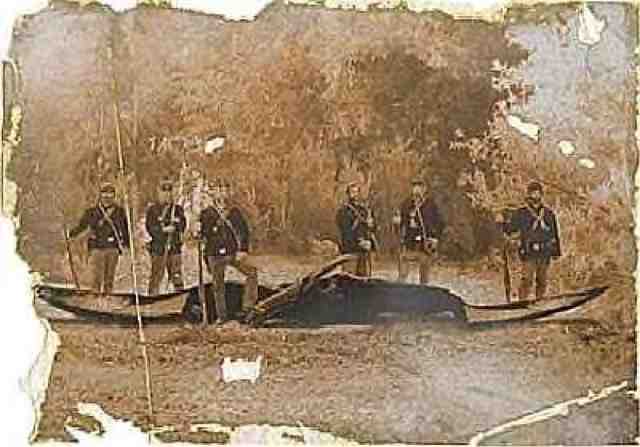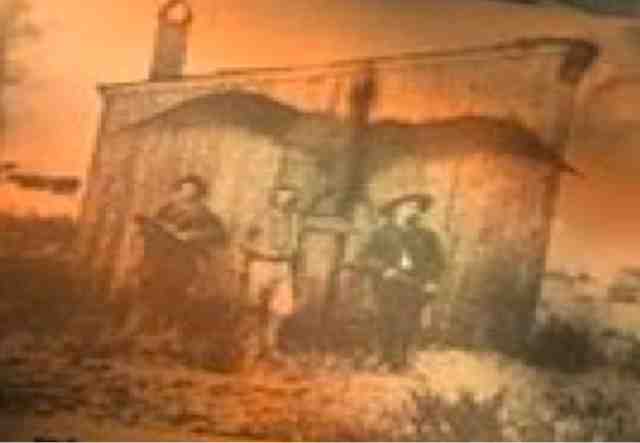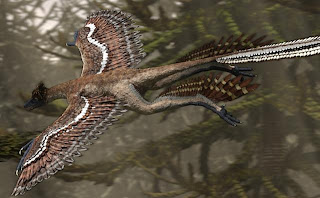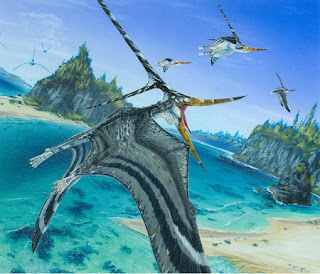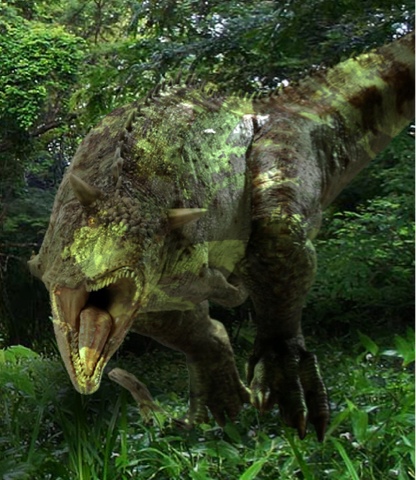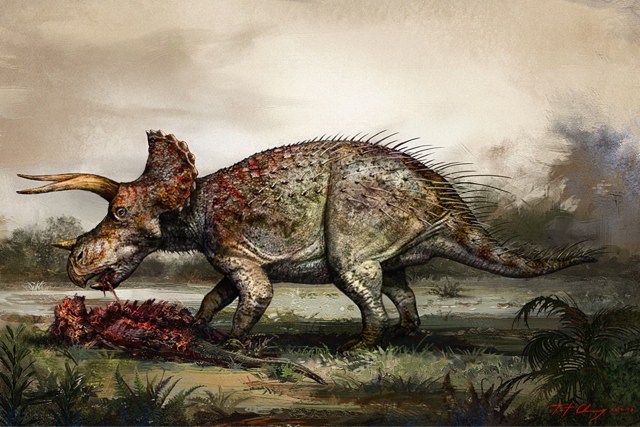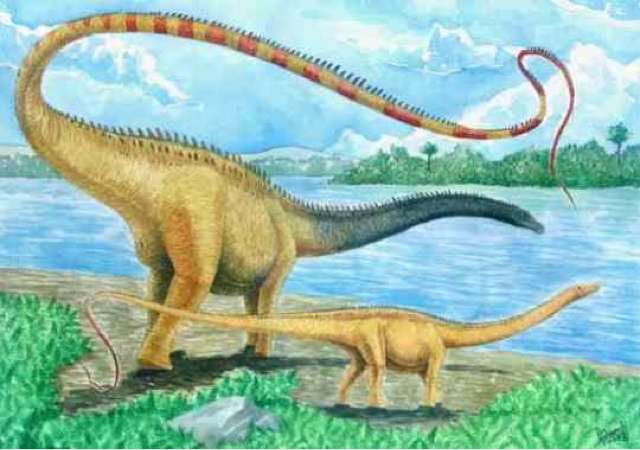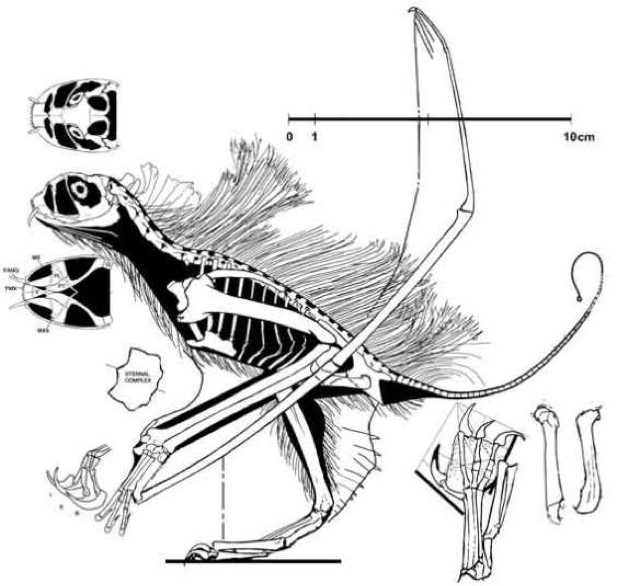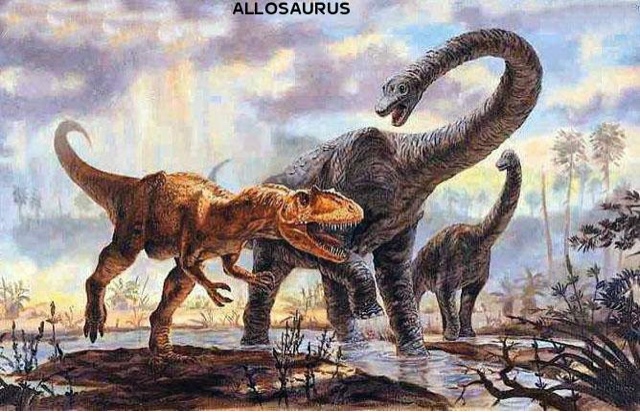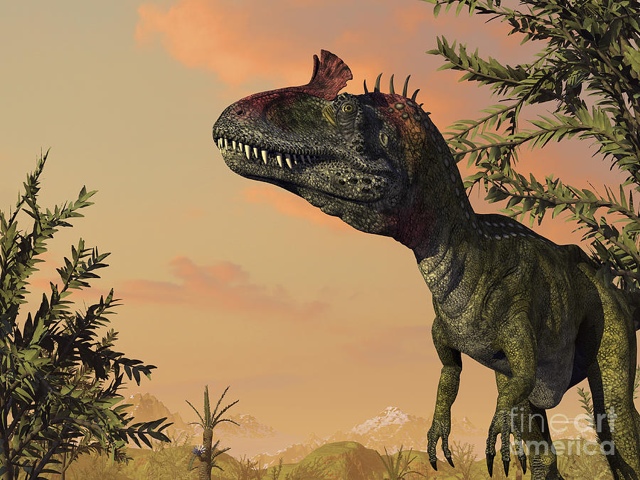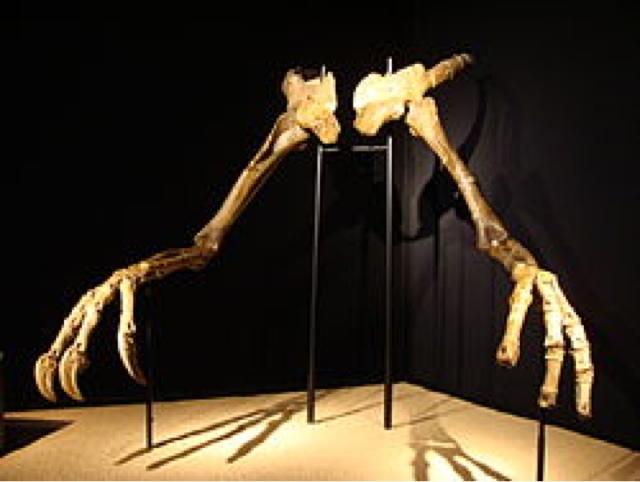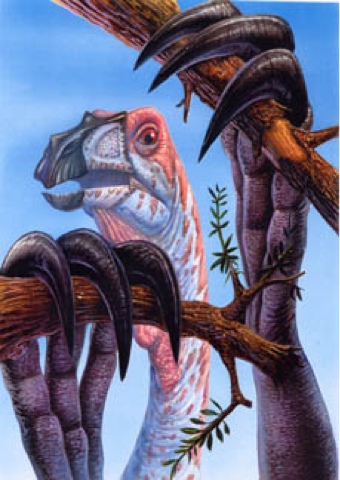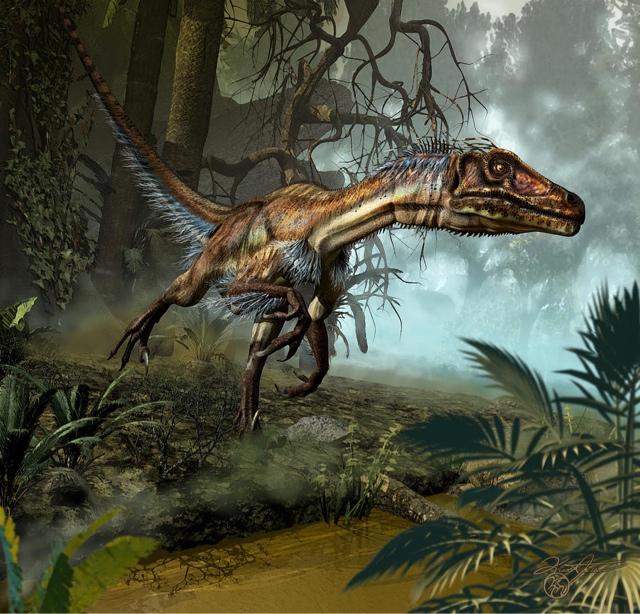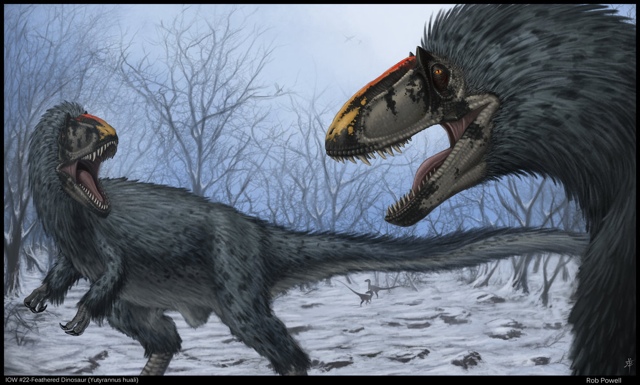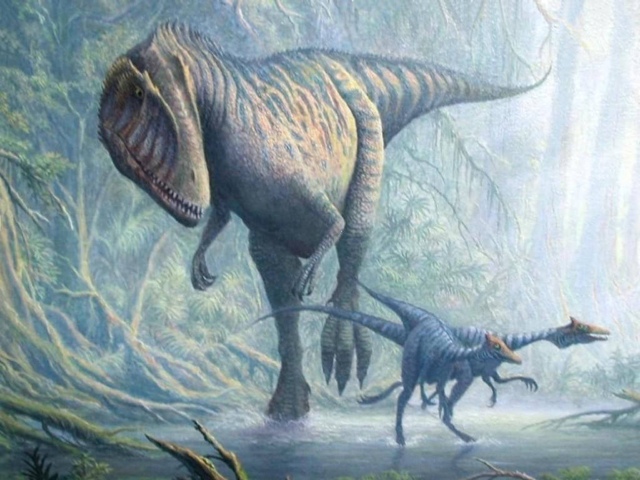The fourth installment in the Jurassic Park series has been confirmed to be in production as we speak. That being said, speculation as to what the film's main antagonist would be began when it was stated that the villain would be a new one, and the most terrifying so far. The following 10 prehistoric monsters should all be up for consideration.
10. Quetzalcoatlus
Although you may not think that Quetzalcoatlus is that scary upon first sight, your opinion may change when you hear that the ancient pterosaur had a wingspan over 50 feet and had a beak the size of an adult human. The giraffe sized Quetzalcoatlus is certainly terrifying, but would likely be a disappointment as the main villain of JP4, hence it's low placing on the list.
9. Allosaurus
This 39 foot long (based on Epanterias), pack hunting, speedy and vicious Jurassic apex predator was certainly a force to be reckoned with. The Allosaurus was one of the most successful predators of all time. The "different lizard" is underrated and deserves the main spot in the Jurassic Park series for once, being that it's actually from the jurassic period. None of the main villains so far have been from the jurassic period (the T-Rex, Velociraptors, and Spinosaurus are all from the Cretacious). The only problem is that it might resemble T-Rex too much for some fans' liking. But then again if you were even slightly observant, you would notice the longer arms with 3 fingers, the lighter build, crests above the eyes, and different skull shapes.
8. Cryolophosaurus
Cryolophosaurus is the largest theropod ever to be discovered in Antarctica, attaining a size similar to that of the Allosaurus. With a unique look that distinguishes the "frozen crested lizard" from the rest, the Cryolophosaurus would be a great choice for the primary antagonist of Jurassic Park 4... If it were a little bigger.
7. Sarcosuchus
The largest crocodilian ever to live at 40 feet long, the SuperCroc would be the best predator in the series for a few reasons. It has the scary elements: giant crooked teeth, huge size, and the element of surprise when in the water. Also, it wouldn't just be restricted to land or water. It could dominate both, being that it has lungs.
But it could also suck for an equal amount of reasons. It wasn't really fast, it would seem out of place as a non-dinosaur in a movie about dinosaurs, and even though it could leave the water, it never went very far. Add that to the fact that it would probably pass up humans for fish and you have a cool-but-not-so-great-for-this-movie giant crocodile.
6. Deinocheirus
This specimen is known by only one thing: A pair of 8 foot long, three clawed arms found in the Gobi desert. This Prehistoric monster's arms are nearly twice the size of that which is currently thought to be the largest theropod, Spinosaurus'. A carnivore twice the size of Spinosaurus would be unstoppable, and it would put on a very interesting performance. This behemoth would rank number one... But we have really no idea what it looks like. It might have looked like this (A.)
A prehistoric anteater, similar to Therizinosaurus (real name, not kidding), or it could have been this (B.)
A sauropod eating, gigantic, vicious beast that would have been the most fearsome creature ever to walk this earth. I would prefer B.
5. Utahraptor
Everybody who watched the first jurassic park remembers the man sized velociraptors with their 1 huge claw on each foot. They were horrifying. Now imagine a raptor twice the size of that. Imagine a velociraptor with claws over a foot. That, my friend, is a Utahraptor. The currently described specimens are only slightly larger than the ones in Jurassic Park (which in real life were only the size of a turkey and were feathered.) at around 20 feet in length. However, these are thought to be juveniles. The larger ones reported are nearly 40 feet. That's close to the size of the biggest T-Rex found; Sue.
The only issue with this is the Velociraptors. You can't have Jurassic Park without Velociraptors. Two species of raptor in the same movie could get confusing... Unless... The Utahraptors are feathered and the Velociraptors aren't... Perhaps they could compete and have a showdown scene!!!
4. Yutyrannus
A very recent discovery, the Yutyrannus was found in 2012. It's name means "feathered tyrant", because it's fossils showed feather impressions. It is the largest known feathered dinosaur, exceeding 30 feet. Only one specimen has been found, but it was in phenomenal shape. Perhaps future fossils will show a dinosaur close to the size of it's cousin, Tyrannosaurus Rex, since that seems to happen when new large species are discovered. The feathered titan would certainly make a unique antagonist. If it were just a smidgen bigger...
3. Carnotaurus
The horned, knobbed, muscular, fast, cannibalistic and aggressive Carnotaurus had a name equally as frightening as it's appearance and behavior. The meaning of Carnotaurus is "flesh eating bull". Scary, right? It's vestigial arms were creepy too. But that was nothing compared to the fact that this allosaurid could have been the fastest large theropod ever to exist at over 30 feet long due to it's long and muscular legs. Combined with the possibility that the flesh eating bull was a pack hunter and you have a dinosaur like no other. One prominent feature is it's horns above it's eyes. The horns were likely sheathed in keratin-like material like those of modern day cows, making them even bigger than in the picture above. Carnotaurus was possibly cannibalistic, very territorial and vicious. This made Carnotaurus a true monster.
2. Carcharodontosaurus
The "shark-toothed lizard" was about 45 feet long, making it one of the largest carnivores of all time. Even bigger than T-Rex. It's long narrow skull filled with triangular teeth meant for slicing meat was a true detail of a predatory dinosaur that could kill anything it pleased. The African theropod was the second largest in it's region, behind only
the Spinosaurus, which it would have had little competition with due to their different food preferences. Although it resembled the Tyrannosaurus Rex a little bit, details could be added by the producers to differentiate them if this was meant to be the villain of JP4.
1. Giganotosaurus
A close relative of Carcharodontosaurus, Giganotosaurus is is well know for being one of the few theropods bigger than the most well known dinosaur, T-Rex. Not only was Giganotosaurus bigger than T-Rex, it was faster, too. The largest carnivore ever to exist in South America, it probably fed on the largest herbivore ever to exist in South America: Argentinosaurus. At over 115 feet long and over 95 tons, the titanosaur Argentinosaurus was no pushover. A single Giganotosaurus wouldn't stand a chance against a fully grown Argentinosaurus. However, a large pack of Giganotosaurus could bring one down. While it was harder to kill, it was more sustaining and thus preferable to the smaller Amargasaurus.
The pack hunting technique that Giganotosaurus employed made it the deadliest carnivore to ever walk this earth. A pack of Giganotosaurus could take down anything.
Since it looks somewhat similar to the familiar T-Rex, the "giant southern lizard" could be differentiated by a new coloration, keratin spikes and knobs, and perhaps a standoff with a T-Rex. Perhaps the T-Rex and Spinosaurus could be getting ready for round 2 when the pack of Giganotosaurus runs in and kills them both. For the reasons of pack hunting, strength, size, and speed, Giganotosaurus reaches number one in my list of dinosaurs that should be (and haven't already been) the top carnivore in Jurassic Park IV.


